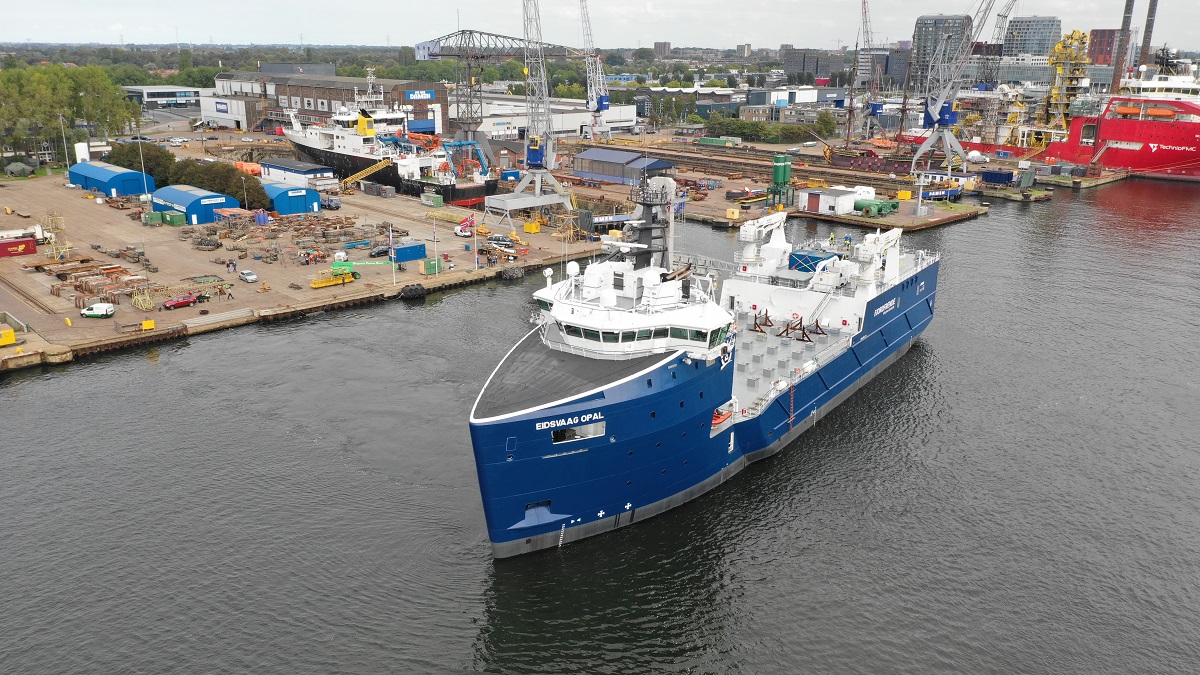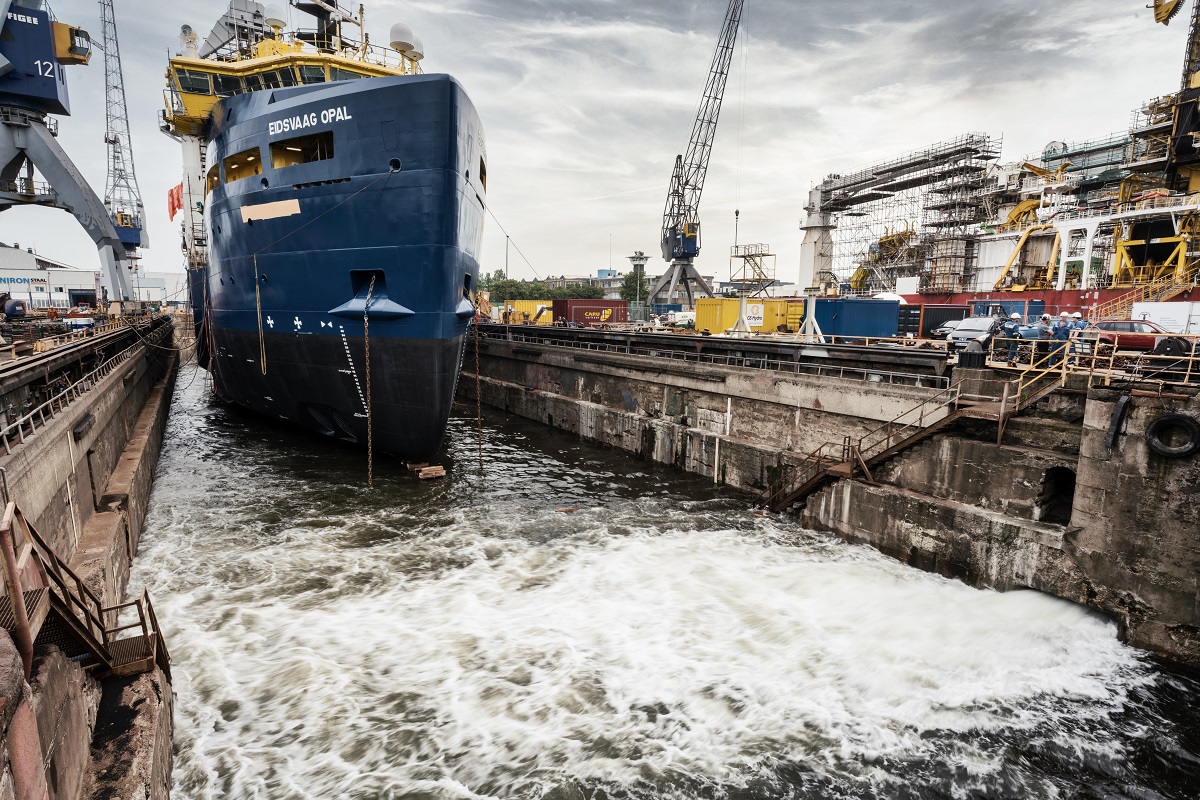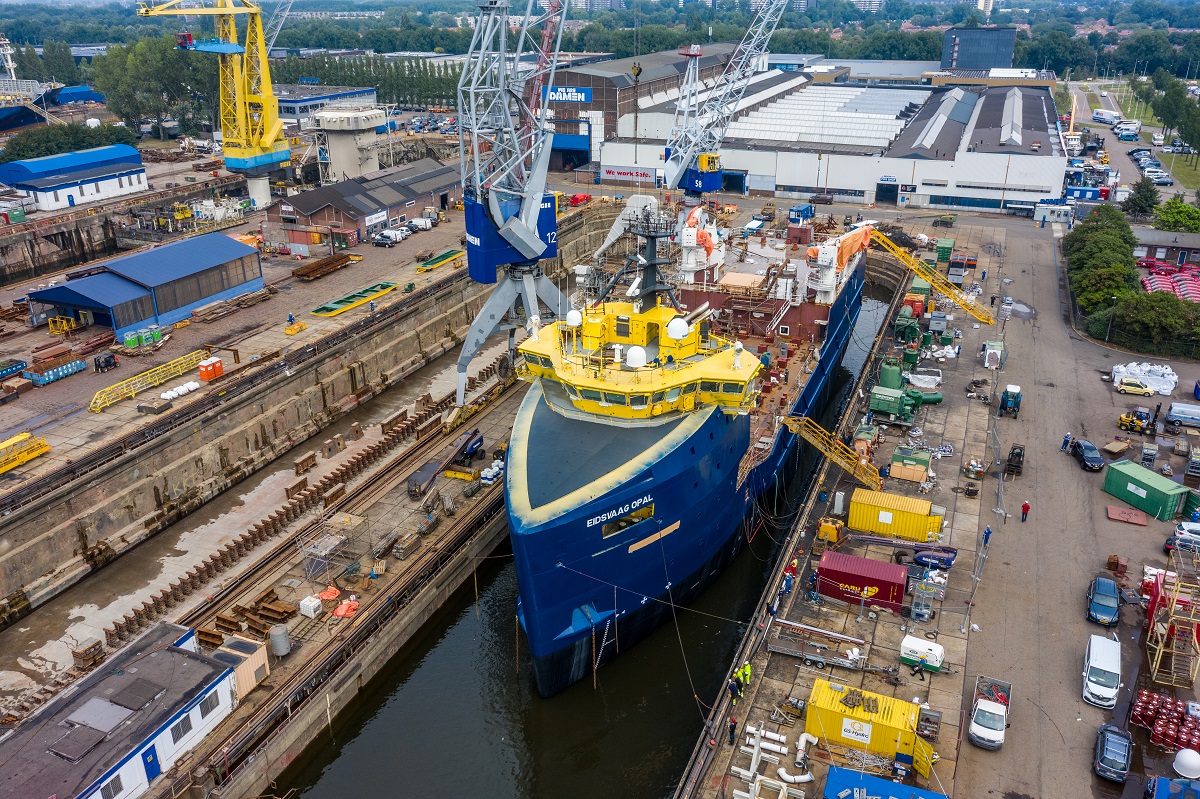Vessel to play a significant role in reducing carbon footprint
Damen Shipyards Group has recently completed a conversion project for Norwegian company Eidsvaag. Following a tender procedure, Damen Shiprepair Amsterdam (DSAm) converted a former platform supply vessel (PSV) into a fish feed carrier, named Eidsvaag Opal, in a project involving a series of major works.

Amongst other things, Damen was required to extend the vessel by 5 metres. This involved the yard cutting the hull in two and inserting in new steel sections. Damen was also required to widen the beam of the vessel – using a series of side boxes – to give additional stability and cargo capacity.
Additionally, the yard integrated 35 new silos and a big bag hold, enabling Eidsvaag Opal to transport up to 2,800 tonnes of fish feed. Damen also outfitted the vessel with five new cranes and a discharge system of conveyors, buckets, elevators and a discharge arm.

The project also required considerable electrical work, carried out by FMJ Marine Automation. The supplier removed some 480 cables – approximately 15 kilometres – from the old cargo systems alone. In total, the company pulled 51 kilometres of cable and connected 1,237 cables on the project.
DSAm secured the tender to carry out the conversion of Eidsvaag Opal due, amongst other things to its close proximity to Niron Staal – Damen’s specialist steel fabricator. Another factor in the award of tender was Damen’s previous conversion experience for the aquaculture sector and the fact that the company knew the vessel – having built the PSV back in 2013.

The project required considerable steel work, totalling 875 tonnes. In addition to the steel work required, the Eidsvaag Opal conversion was given an additional layer of complexity with the arrival of the coronavirus epidemic. This required the yard to cease work on the project for one week, in order to implement robust safety measure. Thanks to this, the project was able to continue with minimum danger to health. Despite the need to socially distance during work on the project, work continued at a good pace – taking in total 346 days.
In week 43, the Eidsvaag Opal underwent her first loading in order to test the new system. The test involved the vessel carrying 180 tonnes of feed in the silo and 55 tonnes in big bags. Loading went well, requiring only small adjustments to the loading equipment in the big bag room. The feed was unloaded at a fish farm close to Tromsø, at which point the capacity and quality was approved by the product owner. In week 44, a bigger load was transported for the second test – some 700 tonnes.
DSAm senior project manager Arjan de Vos explains, “Naturally we were very concerned with the well-being of everyone working on the project and had to take the time to implement safety measures. This proved to be very effective and not only were we able to continue the work, but we did it in good time. I’m very pleased with the way that we have risen to the challenge presented by the pandemic as a team and been able to continue to safely serve our clients during this time.”
The vessel will operate in the Fjordfrende collaboration. This collaboration will be operated by Eidsvaag for Skretting and Cargill. Ordinarily, Skretting and Cargill are competitors in the fish feed market, but are collaborating in outbound logistics. The partnership is based on a number of horizontal logistics projects receiving funding from the EU Commission, aiming at increasing sustainability and efficiency in the aquaculture industry. As a result of Fjordfrende, the CO2 emissions of both companies will be reduced by one fifth, some 10-20 million kg CO2 per year.
Source: Damen